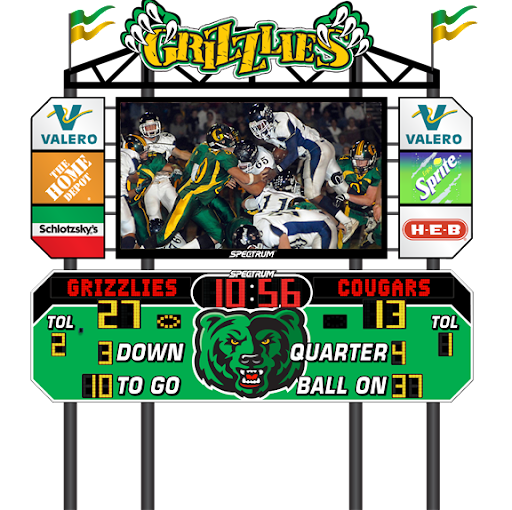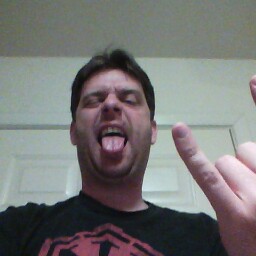James E Bishop
age ~50
from Frankfort, MI
- Also known as:
-
- James Eugene Bishop
- James M Goines
- James Michael Goines
- James I Goines
- James Bischop
- Michael Goines
- James Goings
James Bishop Phones & Addresses
- Frankfort, MI
- Detroit, MI
- Owosso, MI
- Okemos, MI
Resumes

James Bishop Waterville, OH
view sourceWork:
Sysco Foods
Mar 2013 to 2000
SALES & MARKETING CONSULTANT BDS Enterprises Inc. I & II
Kalamazoo, MI
Apr 2006 to Jun 2012
GENERAL MANAGER/CONTROLLER B.A.S.I.C
Portage, MI
Dec 2000 to Apr 2006
FLEX SPENDING ADMINISTRATOR B.A.S.I.C
Sep 2002 to May 2004
SALES & MARKETING MANAGER
Mar 2013 to 2000
SALES & MARKETING CONSULTANT BDS Enterprises Inc. I & II
Kalamazoo, MI
Apr 2006 to Jun 2012
GENERAL MANAGER/CONTROLLER B.A.S.I.C
Portage, MI
Dec 2000 to Apr 2006
FLEX SPENDING ADMINISTRATOR B.A.S.I.C
Sep 2002 to May 2004
SALES & MARKETING MANAGER

James Bishop Taylor, MI
view sourceWork:
Michigan Academy Emergency Services
Oct 2011 to Present Inkster Fire Department
Jun 2011 to Present Vac-All Emergency Response Group
May 2011 to Present
Haz-mat Technician Heathlink EMS
Jun 2010 to Present American Healthcare Services
Woodhaven Fire Department
Woodhaven, MI
Jun 2010 to Oct 2010 AT&T Construction
Southfield, MI
Jul 2007 to Oct 2008
Lead Tech, ran a crew of 9 workers
Oct 2011 to Present Inkster Fire Department
Jun 2011 to Present Vac-All Emergency Response Group
May 2011 to Present
Haz-mat Technician Heathlink EMS
Jun 2010 to Present American Healthcare Services
Woodhaven Fire Department
Woodhaven, MI
Jun 2010 to Oct 2010 AT&T Construction
Southfield, MI
Jul 2007 to Oct 2008
Lead Tech, ran a crew of 9 workers
Medicine Doctors

Dr. James Bishop, Southfield MI - MD (Doctor of Medicine)
view sourceSpecialties:
Emergency Medicine
Address:
Independent Emergency Phys
16001 W 9 Mile Rd, Southfield, MI 48075
2488493331 (Phone)
16001 W 9 Mile Rd, Southfield, MI 48075
2488493331 (Phone)
Certifications:
Emergency Medicine, 2011
Awards:
Healthgrades Honor Roll
Languages:
English
Hospitals:
Independent Emergency Phys
16001 W 9 Mile Rd, Southfield, MI 48075
Garden City Hospital
6245 Inkster Road, Garden City, MI 48135
Providence Hospital
16001 West 9 Mile Road, Southfield, MI 48075
16001 W 9 Mile Rd, Southfield, MI 48075
Garden City Hospital
6245 Inkster Road, Garden City, MI 48135
Providence Hospital
16001 West 9 Mile Road, Southfield, MI 48075
Education:
Medical School
Wayne State University
Graduated: 1997
Medical School
St John Hospital and Med Center
Graduated: 1997
Wayne State University
Graduated: 1997
Medical School
St John Hospital and Med Center
Graduated: 1997

James Edward Bishop, Southfield MI
view sourceSpecialties:
Emergency Medicine
Emergency Medical Services
Emergency Medical Services
Work:
Independent Emergency Physicians PC
16001 W 9 Mile Rd, Southfield, MI 48075
16001 W 9 Mile Rd, Southfield, MI 48075
Education:
Wayne State University (1997)

James Edward Bishop, Southfield MI
view sourceSpecialties:
Emergency Medicine Physician
Address:
16001 W 9 Mile Rd, Southfield, MI 48075
Board certifications:
American Board of Emergency Medicine Certification in Emergency Medicine
Isbn (Books And Publications)







Dynamic Becoming: Reflections on the Philosophical and Historical Legacy of Bruce Lee
view sourceAuthor
James Bishop
ISBN #
0595215882

Epitaph for a Desert Anarchist: The Life and Legacy of Edward Abbey
view sourceAuthor
James Bishop
ISBN #
0684804395
Name / Title
Company / Classification
Phones & Addresses
President / CEO
JEBCO, Inc.
Home Builders
Home Builders
321 Applegate Parkway, Suite E, Pelham, AL 35124-1813
2056210306, 2056210309
2056210306, 2056210309
President
Bay Road Electrical Ltd.
Contractors - Electrical
Contractors - Electrical
3245 St. Margaret's Bay Road, Timberlea, NS B3T 1J1
9028762875, 9028762520
9028762875, 9028762520
Owner
Epic Roofing & Exteriors Ltd.
Epic Roofing
Roofers
Epic Roofing
Roofers
2435 22 St NE, Calgary, AB T2E 8K8
4033663770, 4033663771
4033663770, 4033663771
President
Bay Road Electrical Ltd
Contractors - Electrical
Contractors - Electrical
9028762875, 9028762520
Owner
Epic Roofing & Exteriors Ltd
Roofers
Roofers
4033663770, 4033663771
Incorporator
Bishop Plumbing, Inc
Residential Plumbing
Residential Plumbing
Whitestar Advisors, LLC
Real Estate Investment Advisor Services · Real Estate Agent/Manager
Real Estate Investment Advisor Services · Real Estate Agent/Manager
5619999949
J & N BISHOP ENTERPRISES, LLC
Us Patents
-
Bishop Traction Splint Device (Btsd)
view source -
US Patent:20170273817, Sep 28, 2017
-
Filed:Apr 24, 2017
-
Appl. No.:15/495562
-
Inventors:James Martin Bishop - Carleton MI, US
-
International Classification:A61F 5/058
A61F 5/048 -
Abstract:Usage of the Original Device Broken Down: The original device was created to stabilize a unilateral (one leg) closed mid shaft femur fracture by the use of held in place mechanical traction. The device has parallel telescoping rails, made from the frame itself, these rails allow the device to be adjusted and size appropriate for all heights of patients requiring this device. These rails lock in the position the medical provider deems correct. To start the application process, a medically trained individual must first apply an ankle brace (if no ankle fracture is present) to the injured leg, this brace has a loop attached to the bottom of it (this loop is used later), the provider will then pull manual traction using the ankle of the injured leg in a directional manner meant to realign the broken femur to its normal position prior to the break. The goal is to stretch the shortened injured leg until it meets the length of the non-injured leg. The force needed to reach this position is then matched by the devices mechanical ability to recreate the same amount of force the provider used to hold the leg in proper place. The original device then uses a strap that wraps around the whole upper portion of the injured leg (ischium/groin/thigh area), this strap secures the upper leg to the device and now becomes the anchor point the device will use to pull traction against. After this groin strap is secured, the device has a ratchet strap that can now be attached to the ankle brace loop mentioned above. Traction is now applied by pulling the leg taught until it matches the manual force applied by the provider; this is done by using a hand turned dial located on the device end. Once the desired outcome is reached, the device is then secured in place to inhibit any further movement until further medical care is required.Usage of the Modified BTSD Broken Down: The BTSD will serve the same function as the original, being a tool that is specific for a unilateral closed mid shaft femur fracture; but will also come optional to be outfitted with two fixed in place ratchet assemblies for treating a bilateral femur fracture. The key differences the BTSD will have over the original will be (1) better overall stabilization to the injured leg, (2) the BTSD design change to the original frame offers a simpler and a more practical application which now allows the uninjured leg to be part of stabilization process, (3) the BTSD offers a less painful, more effective and overall safer means of traction being applied, (4) the BTSD ratchet assembly housing will come optional with one ratchet strap housing assembly being able to slide and lock into grooved/notched positions found on the device frame; or come optional with two ratchet strap housing assemblies that will be found fixed on the device frame that do not move, this option being used to treat bilateral femur fractures. (5) The BTSD traction assembly will also have different means to how you apply the traction force, I am removing the single hand turn dial located on the housings side and replacing it with an adapter that will accept a handheld wrench device to allow better leverage during turns; an adaptor will be located on each side of assembly for the choice of leg affected (6) the BTSD will now offer-the option of the shock position for unstable patients. Outside of these specific and unique changes, the BTSD will utilize certain aspects, specs and be made out of similar materials from the original device.Steps of BTSD Application: (1) Depending on version of device you have, recognize the need of device (unilateral/bilateral closed mid-shaft femur fracture) (2) Carefully apply ankle brace(s) to injured leg(s). (3) Measure the desired length needed of the device. (4) If using the unilateral device option, the provider will then slide the ratchet housing assembly to the correct groove notch lock position of leg affected (4) The provider will then carefully guide the device into its correct position; this technique is similar to that of the original device, stopping at the hips. (5) Once in position, the provider will secure the two shoulder straps to the patient. (6) Now that the patient is strapped in, the devices ratchet strap can now be attached to the ankle brace(s) that were applied earlier; it attaches to a loop found on the ankle brace bottom by use of a hook. (7) The provider will now use the hand held wrench/lever device, attach it to the appropriate side adapter end of the ratchet assembly housing and begin applying traction; continuous turns of traction will be conducted until the injured leg is pulled enough to realign fracture, if both legs are affected you will pull traction simultaneously on both legs until desired outcome is reached. (8) After desired traction is achieved, the injured leg(s) is now further secured to the device with Velcro straps using the opposite leg as a secondary means of splinting; these Velcro straps are found attached to the device. (9) The abdominal strap is now fastened once all the leg straps are completed; this is another means of securing the patient to the device, helping minimize any potential harmful movements during the duration of patient care. (10) If needed, you can set the tripod arm into the elevated position, placing the patient in the shock position.
Plaxo

James Bishop
view sourcePhoenix, ArizonaIndependent Graphic Designer/Creative Consultant a...

James Bishop
view sourceDirector of Major Account Planning and Development... James Bishop is a Senior Sales and Marketing Professional with extensive experience in managing complex B-to-B consultative sales and digital marketing... James Bishop is a Senior Sales and Marketing Professional with extensive experience in managing complex B-to-B consultative sales and digital marketing solutions. Successful management and director level experience in strengthening and developing sales divisions under aggressive growth expectations...

James Bishop
view sourceChief Operating Officer at Bishop Telecommunicatio... Retired employee of McDonnell- Douglas Aircraft Corporation. Retired employee of the Department of Defense

James Bishop
view sourcePast: Head of Sales at Arbuthnot, Institutional Sales at Teather and Greenwood, Institutional...

James Bishop
view sourceDirector of Sales at Subex Limited

bishop james
view sourceCruch
Classmates

James Brown (Bishop)
view sourceSchools:
Oklahoma School for the Deaf Sulphur OK 1974-1978
Community:
Jackie Kelly, Windell Windell, Willie Lyons

James Bishop
view sourceSchools:
Goodwyn Junior High School Montgomery AL 2001-2005
Community:
Kathy Franklin, Connie Spearman, Blane Bujalski, Kelvin Kennedy

James Bishop
view sourceSchools:
Gary High School Gary MN 1987-1991
Community:
Gary Dekko, Terry Munson, Roberta Sullivan, Dan Mullin

James Bishop
view sourceSchools:
Bay Springs High School Bay Springs MS 1973-1977
Community:
Roy Rogers, Odena Wheaton, Antonio Newell, Mekeshia Smith, Dianne Davis

James Bishop
view sourceSchools:
Dryden High School Dryden VA 1951-1955
Community:
Frank Rogers, Edna Mack, Christy Anders, Christopher Deary

James Bishop
view sourceSchools:
Thomas Dale High School Chester VA 1963-1967
Community:
Donnie Gibbs, Fred Boyles

James Bishop
view sourceSchools:
Baldwin Junior High School Montgomery AL 1973-1973
Community:
Virginia Kilgore, Margaret Troutman, Dot Wells, Liane Guthrie, Sandi Masterson

James Bishop (Biskup)
view sourceSchools:
Hurst High School Mt. Pleasant PA 1961-1965
Community:
Catherine Stairs, Cheryl Blystone, John Secosky, Mary Urban, Henry Farrell
Youtube
Myspace
Googleplus

James Bishop
Lived:
Southgate, MI
Ann Arbor, MI
Riverview, MI
Ann Arbor, MI
Riverview, MI
Work:
University of Michigan Press - Acquisitions Assistant (2011)
Discount Drinks - Laborer (2009-2010)
Pool Time - Laborer/Cashier (2008-2009)
St. Cyprian School - Maintenance (2007-2008)
Discount Drinks - Laborer (2009-2010)
Pool Time - Laborer/Cashier (2008-2009)
St. Cyprian School - Maintenance (2007-2008)
Education:
University of Michigan - Political Science, Southgate Anderson High School
Relationship:
Single
About:
I'm James Bishop, a Political Science major / Film minor at the University of Michigan. I'm passionate about people, politics, media, and philosophy. My stimulants of choice are coffee and con...
Tagline:
Gladly contributing to Google's eventual world-dominance.
Bragging Rights:
Graduated Magna Cum Laude from Southgate Anderson High School, Eagle Scout, General Awesomeness

James Bishop
Work:
Spectrum Corporation - Owner (1971)
About:
Spectrum Corporation, founded in Houston, Texas nearly a half century ago, manufactures, sells and services the highest quality: LED Video DisplaysElectronic Message Displays ScoreboardsSports Timing ...
Tagline:
Owner, Spectrum Corporation, manufacturer of sport scoreboards and outdoor electronic signs
Bragging Rights:
Our products are celebrated for ease of use, beauty, peak performance and uncommon industry durability.

James Bishop
Education:
Alamogordo High School - Slacking, AIU Online - Business Management

James Bishop
Work:
Retired
About:
I'm 66 years young. Retired, I'm single & looking. For a long term relationship, I like history, Archaeology, Military history & Nature (like my Cover Photo).
Tagline:
Single & looking. Retired, Marine Corps - 1964 - 1970
Bragging Rights:
I survived raising 2 kids. That's why I have so much grey hair.

James Bishop
Education:
Sam Houston State University
About:
\

James Bishop
Work:
Nuneaton News - Distributor

James Bishop
Work:
The Skills Partnership - Director Business Development
Tagline:
Life moves pretty fast...

James Bishop
Education:
University of Warwick - Philosophy & Literature

Brian James Bishop
view source
Andrew James Bishop
view source
'James Bishop
view source
James NevahadShyt Bishop
view source
James Bishop
view source
Daniel James Bishop
view source
James Bishop IV
view source
James Lee Bishop Jr.
view sourceFlickr
Get Report for James E Bishop from Frankfort, MI, age ~50















